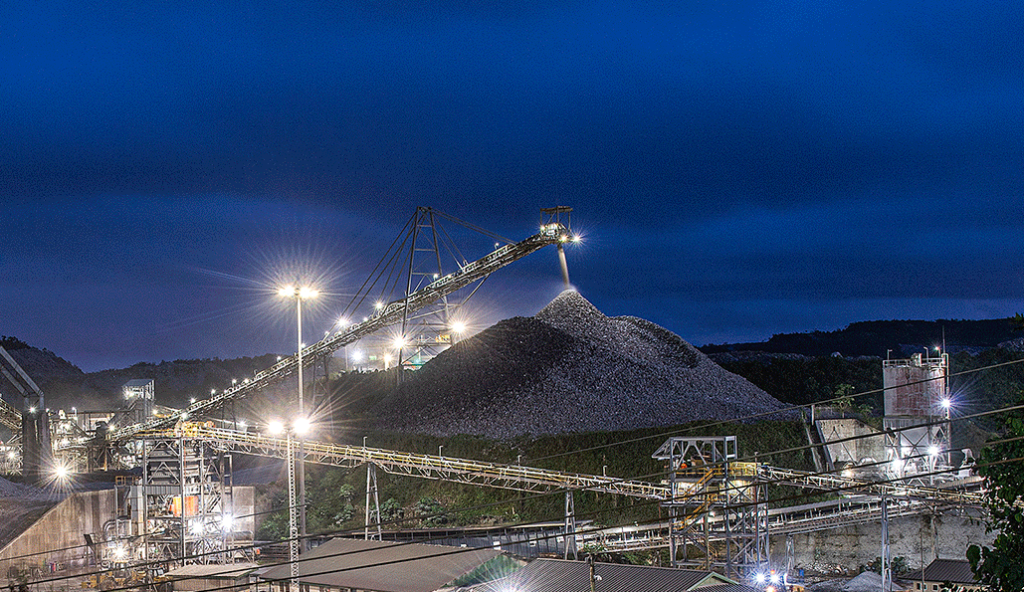Gold Fields and AngloGold Ashanti have agreed the key terms of a proposed joint venture in Ghana between Gold Fields’ Tarkwa (pictured above) and AngloGold Ashanti’s neighbouring Iduapriem mines to create what they say will be the largest gold mine in Africa and one of the largest in the world.
The Tarkwa mine is held by Gold Fields Ghana, in which Gold Fields currently owns a 90% share and the Government of Ghana (GoG) holds 10%. The Iduapriem mine is currently 100% owned by AngloGold Ashanti. Both mines are located near the town of Tarkwa in the country’s Western Region.
The parties have agreed in principle on the key terms of the proposed jv and have commenced with preliminary, high-level and constructive engagements with senior government officials in Ghana and will continue engaging with the GoG, relevant regulators and other key stakeholders, with a view to implementing the proposed jv as soon as practically possible. They have also agreed to mutual exclusivity during this engagement.
It is intended that the jv will be an incorporated joint venture, constituted within Gold Fields Ghana and operated by Gold Fields. AngloGold Ashanti will contribute its 100% interest in Iduapriem to Gold Fields Ghana in return for a shareholding in that company.
The companies do not anticipate that any material, additional capital injection will be required by either company to establish the proposed jv, and is expected to materially improve its capital intensity once operational.
Excluding the interest to be held by the GoG, Gold Fields will have an interest of 66.7%, or two-thirds, and AngloGold Ashanti will have an interest of 33.3%, or one-third, in the jv.

The companies said: “The proposed jv would create the largest gold mine in Africa and one of the largest in the world. It will be a high-quality operation, supported by a substantial mineral endowment and an initial life spanning almost two decades.”
Operational synergies will be achieved by optimising mining of the combined orebodies and consolidating the infrastructure of the immediately adjacent mines for the long-term benefit of all shareholders and stakeholders, the companies said.
Martin Preece, Interim CEO of Gold Fields, said: “The proposed jv is an exciting opportunity to combine mining operations that are essentially part of the same mineral deposit and is something that Gold Fields and AngloGold Ashanti have discussed many times before over the years. The ability to optimise mining and the use of shared infrastructure across the combined operation will result in significant flexibility in mine planning, materially enhancing the economics of the mine and ensuring quality and scale of operation that will be world class. That unlocked value will underpin the proposed jv’s continued contribution to our host communities and Ghana for decades to come. For Gold Fields, it will also significantly enhance the overall quality of our portfolio.”
Alberto Calderon, CEO AngloGold Ashanti: “This combination puts together two parts of the same world-class orebody, allowing us to share skills and infrastructure to significantly enhance every aspect of this mining operation, from exploration and planning, to mining and processing. By creating one of the world’s largest open-pit gold operations, in a pre-eminent mining jurisdiction, we will create longer-term value not only for AngloGold Ashanti and Gold Fields, but for the combined stakeholders in our local host communities and for all of Ghana.”
The combined operation comes with an estimated life of at least 18 years, which could increase through an extension and optimisation plan to be considered under the proposed jv over the next three years, and which could also enhance envisaged production and cost parameters.
It would come with estimated average annual production (100% basis) of almost 900,000 oz over the first five years and average annual production in excess of 600,000 oz over the estimated life of operation. All-in sustaining costs (in 2023 terms) were expected to be less than $1,000/oz over the first five years and less than $1,200/oz over the estimated life of operation.











